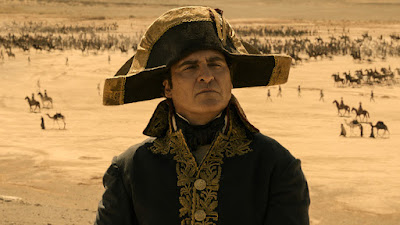Leo the Lizard has been stuck in the same Florida school for decades. When he learns he only has one year left to live, he plans to escape to freedom, but instead has to rescue his class from their horribly mean substitute teacher.
In the collaborative effort of directors Robert Marianetti, Robert Smigel, and David Wachtenheim, Leo unfolds as a distinctive animated escapade featuring the unmistakable voice of Adam Sandler as the titular character—an elderly, cantankerous lizard. Alongside Sandler, Bill Burr breathes life into Squirtle, Leo's trusty turtle companion, and Cecily Strong joins the ensemble. The narrative unfolds within the confines of a Florida school, where Leo and Squirtle reside as cherished classroom pets in a terrarium.
Leo, having borne witness to the passage of numerous generations of schoolkids, stands at a contemplative juncture. With the realization that he is approaching the end of the typical lizard life expectancy, Leo harbours a yearning to venture beyond the familiar school walls and immerse himself in the wild. However, as the prospect of this adventure materializes, Leo undergoes a reevaluation of his aspirations. The years of astute observation have endowed him with a wealth of wisdom, predominantly focused on the fifth-graders he has silently observed.
The film commences with a somewhat cheesy tone, as the schoolkids melodically express their sentiments about entering the final year of elementary school. Despite recurrent musical interludes, Leo injects just enough bite into the narrative to prevent an overwhelming sentiment. The comedic brilliance manifests in clever sequences, including Leo's portrayal as a mini Godzilla wreaking havoc in a LEGO city. The recurring motif of a 'Child Safety Drone' tailing the highly allergic Eli consistently elicits humour. Moreover, the depiction of kindergarteners as chaotic, round-headed little maniacs introduces a delightful touch of eccentricity.
The emotional nucleus of the story is adeptly established, introducing the audience to the unique bond shared between Leo and the students. However, as the narrative unfolds, a subtle dip in momentum is encountered, navigating a convoluted path for Leo to confront peril before arriving at an inevitably joyful resolution.
Adam Sandler, in his voice portrayal of Leo, adopts a gentler tone infused with a touch of congestion. The film endeavours to be an entertaining vehicle where Sandler's character—a wise old lizard—dispenses flawless life advice to the eccentric fifth-graders. Leo maintains self-awareness with a subtle adult edge right from the outset. The overarching theme of therapy becomes prominent, with the 74-year-old lizard Leo unveiling his ability to converse and demonstrating an insightful understanding of each child's needs during weekend sojourns.
The film sporadically sparks with energy through slapstick sequences and a vibrant colour palette. These visual elements showcase Leo's airborne escapades, ethereal bubble floats, and interactions with a spectrum of talking animals. While ostensibly focused on middle schoolers, Leo introduces a level of maturity that sets it apart from some of Sandler's other ventures on Netflix.
Leo's counselling sessions with the children address a spectrum of issues, ranging from an inability to pose questions to the masking of anxiety. These nuanced two-hander vignettes emerge as the film's triumphs, with Sandler's co-written script taking specific problems seriously and delivering life lessons without resorting to gratuitous humour.
Brightly animated and punctuated with instances of unexpected insight, Leo emanates a warm likability that transcends its animated framework. While the film's lessons may veer into the clichéd, they are presented with enough sincerity to captivate even the most sceptical viewers, transforming them into avid fans. Despite adopting an after-school-special demeanour, Leo offers a refreshing approach, with each week introducing a new child taking the lizard home and engaging in heartfelt conversations.
As Leo channels his apprehensions about mortality into aiding students who feel overlooked by their parents, the film introduces genuinely touching moments that circumvent sentimentality. These touches endow the flawed characters with relatability, steering clear of saccharine indulgence. Despite navigating some formulaic narrative turns, the plot retains its engagement and enjoyment.
Adam Sandler's adeptness in voice acting shines through in Leo, infusing depth and personality into the eponymous character. The film delves into plot elements involving grief, peer pressure, bullying, and more, presenting relatable subplots often overlooked in animated endeavours. While Leo doesn't delve extensively into these subjects, it imparts a swift morale boost and inspirational moments, underscoring Leo's authentic intentions.
Initiating as an adventure story, Leo morphs into a moralistic fable, further evolving into a redemption narrative and concluding as a rescue mission. Each narrative arc leaves room for improvement in completeness. Despite these narrative nuances, Leo seamlessly blends heart, humour, and animated allure, crafting an endearing coming-of-age tale that resonates with audiences across age groups.
Leo was released on Netflix on November 17, 2023





























